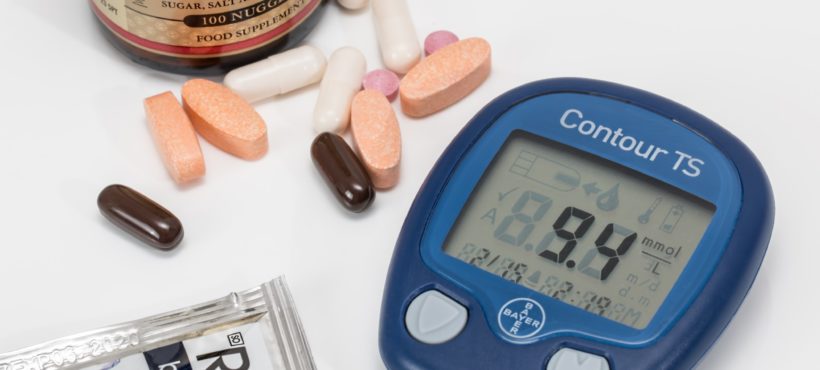
Oral Diabetes Medications Explained: Options, How They Work, and Where to Buy Them
How common is diabetes? More common than you think.
According to the CDC, more than 30 million people have the condition in the United States. That’s nearly 10% of the population!
A chronic disease, it can lead to various complications, some of which may be life-threatening. In fact, diabetes is one of the leading causes of death in the country!
Fortunately, there are ways to treat the condition. For one thing, there are oral diabetes medications that you can take to control your blood sugar levels.
How many of them are there? How do they work? Want to know? If so, be sure to read the rest of the post!
What Is Diabetes?
Diabetes mellitus is a metabolic disease that occurs when blood sugar becomes too high. In a healthy individual, this would be prevented by insulin, a hormone that moves sugar into cells for storage.
With diabetes, however, the body either doesn’t produce enough insulin or it can’t use it effectively. As a result, there are high levels of sugar in the blood.
Different Types of Diabetes
Type 1 diabetes is an autoimmune disease. It happens when the body’s own immune system attacks the pancreas; this prevents it from making insulin.
Unfortunately, the exact cause is unknown. However, genetic and environmental factors are thought to play a role.
In contrast, type 2 diabetes is associated with insulin resistance. That is, the body becomes resistant to the hormone. As a result, sugars build up in the blood.
The third type, gestational diabetes, occurs during the second or third trimester of pregnancy. If left untreated, it can lead to complications for both the mother and baby.
Symptoms of Diabetes
Diabetes can cause various symptoms. For example, it can lead to frequent urination, unusual thirst, weight change, blurred vision, frequent infections, lack of energy, and tingling in the hands or feet.
Contact a health professional right away if you notice any of these symptoms. You never know when it might turn into a life-threatening situation!
Risk Factors for Diabetes
Certain factors can increase your risk of diabetes. For example, you’re more likely to develop type 1 diabetes if you have a parent or sibling with the condition.
Risk factors for type 2 diabetes include obesity, high blood pressure, and high cholesterol. Those who aren’t physically active are also at a higher risk.
Complications
High blood sugar can wreak havoc on the tissues and organs in your body. The higher the sugar levels, the greater the risk of complications.
For instance, it can lead to heart disease, stroke, neuropathy, retinopathy, vision loss, and hearing loss. It can also cause wounds or ulcers, which if left untreated, may require amputation.
Treatment Options for Diabetes
There are various medications available for diabetes. Some are available as injections (mostly for type 1 diabetes) whereas others are taken orally, by mouth.
Depending on the severity of the condition, you may need to take more than one drug—sometimes in combination with insulin.
Oral Diabetes Medications
Different drugs lower blood sugar in different ways. Here are some of the most common ones.
1. Alpha-glucosidase Inhibitors
These drugs inhibit an enzyme called alpha-glucosidase in the small intestine. This slows down the breakdown of carbohydrates in the body.
As a result, there will be lower levels of sugar in the blood. Common side effects include stomach pain, gas, and diarrhea.
2. Biguanides
Biguanides are generally one of the first medications used for type 2 diabetes. They work by reducing the amount of glucose that’s produced in the liver.
Not only that, but they also improve the body’s sensitivity towards insulin. Well-tolerated, most side effects will go away within a few days.
3. DPP-4 inhibitors
These drugs block the action of an enzyme called DPP-4. This raises the levels of GLP-1, a hormone that increases insulin production in the body.
One of the best things about these medications is that it improves blood sugar without making it drop too low. Common side effects include nausea, diarrhea, skin reactions, and headache.
4. Meglitinides
Meglitinides work by inducing insulin secretion from the pancreas. Due to their short onset of action, they must be taken immediately before a meal.
Given that they stimulate the release of insulin, hypoglycemia is a possibility. Other side effects include nausea, joint pain, headache, and cold-like symptoms.
5. Sulfonylureas
Sulfonylureas are similar to meglitinides in that they also stimulate the pancreas to release more insulin. They do this by binding to channels on the cell membranes of pancreatic beta cells.
Side effects include hypoglycemia, hunger, weight gain, dark-colored urine, and skin reactions.
6. Thiazolidinediones
These drugs work by lowering the body’s resistance to insulin. More specifically, they target a receptor, which activates a number of genes that play a role in how the body stores fat and metabolize sugar.
Generally speaking, they’re used if other medications are not tolerated or successful in lowering blood sugar levels.
Where to Get Diabetes Medications
These medications can be ordered through any pharmacy as long as you have a prescription. That is, you won’t be able to get them over the counter.
Don’t feel like driving down? There’s always the option of ordering them online.
In fact, it might be one of the most affordable options. In some cases, the prices might even be better than your local pharmacy!
Treating Diabetes
As you can see, there are different oral diabetes medications that you can take to control your blood glucose levels. If anything, the most important thing is to always take them as prescribed!
Looking for affordable prescription medications? Why not make an order through our site?


